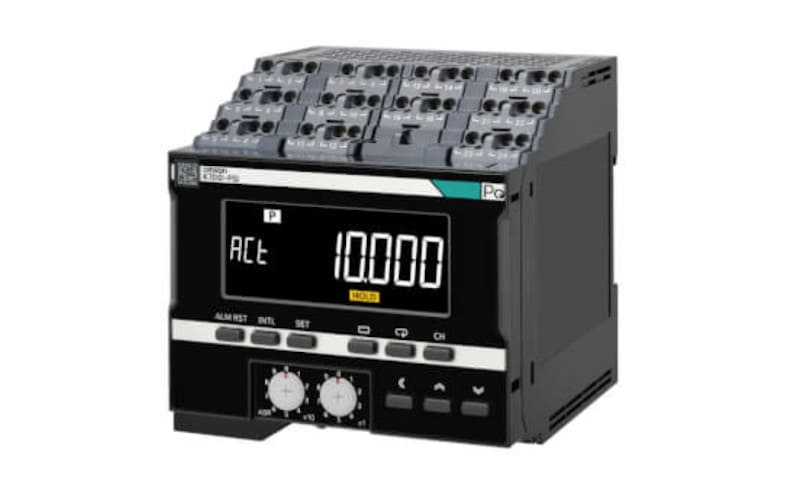OMRON has recently launched the K7DD-PQ Series, an advanced motor condition monitoring device designed to automate the detection of abnormalities in manufacturing sites. The K7DD perfectly fits in OMRON’s view about smart maintenance: by collecting, monitoring, and analyzing live data, OMRON provides solutions that will allow users to use this data for decision making.
By analyzing over 400 types of feature values*1 derived from current and voltage measurements, the K7DD-PQ can detect specific failure modes such as worn blades, chip entanglement, or deteriorating bearings in machine tool spindle motors. This automation eliminates the reliance on skilled workers’ experience and senses, reducing inspection effort and preventing unexpected equipment failure.
K7DD-PQ ensures accurate and comprehensive data processing. It is equipped with high-speed 2.5-μs sampling technology that catches even the most fleeting anomalies, and 6-channel simultaneous/continuous operation capability that processes data without omission or deviation. It can effectively monitor servomotors and induction motors, detecting anomalies caused by gaps between the rotor and stator or changes in torque. The device offers self-contained condition monitoring within the manufacturing site, eliminating the need for complex installations or cloud-based systems. With easy retrofitting to the control panel, local monitoring and immediate anomaly detection become hassle-free.
Operating at a speed of 50-ms, the K7DD-PQ can keep up pace with variable-speed equipment, significantly reducing inspection workload. It simplifies data analysis by automatically selecting effective feature values and setting thresholds, enabling the identification of various failure modes and their root causes. This ensures reliable results and enhances overall equipment effectiveness.
By addressing labor shortages and the need for efficient maintenance practices, OMRON’s K7DD-PQ Series contributes to the automation and optimization of maintenance tasks, ultimately preventing unexpected equipment failures and improving productivity in manufacturing processes.

